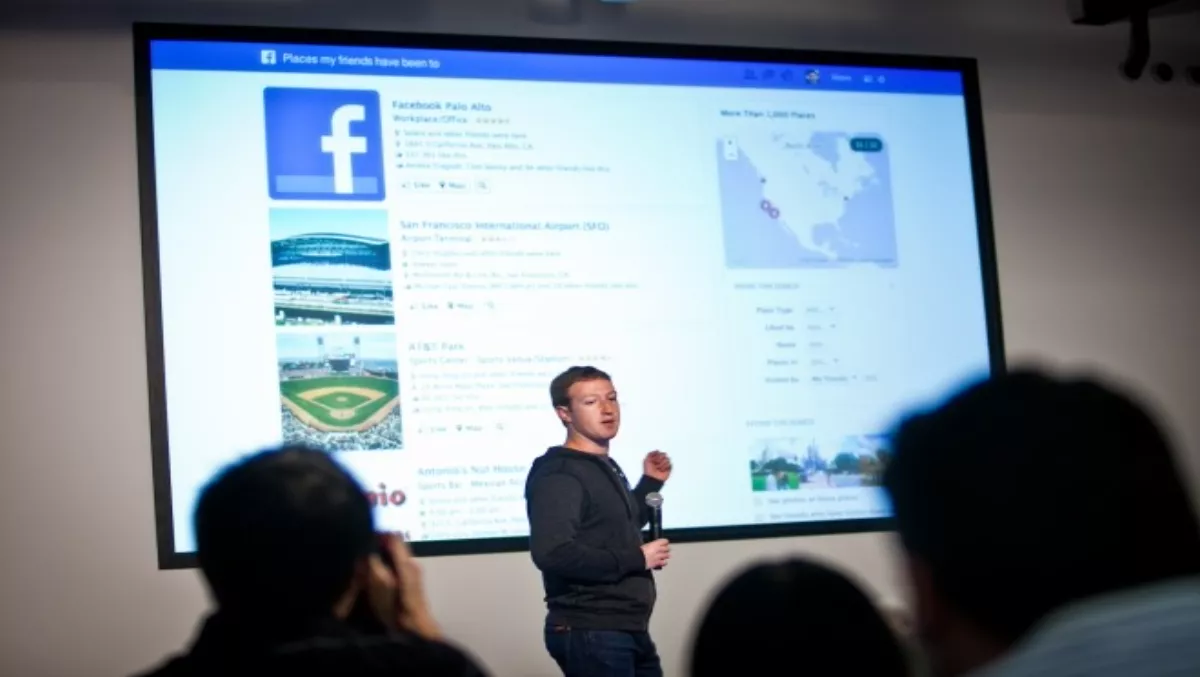
Facebook unveils new search engine
Facebook has revealed a new search engine called "Graph Search", unveiled at the company's eagerly anticipated press event this morning.
Unveiled by CEO Mark Zuckerberg, the social media giant says the search engine will leverage their one billion members' 240 billion photos and one trillion interpersonal connections.
Labelled as a new way to navigate these connections, Graph Search takes Facebook back to their roots, allowing users to use the graph to make new connections.
Zuckerberg was keen to stress that the company is still in the "very early" stage of development of the project however, which is currently only available in English.
"Facebook’s mission is to make the world more open and connected," Zuckerberg said.
"The main way we do this is by giving people the tools to map out their relationships with the people and things they care about. We call this map the graph.
"It's big and constantly expanding with new people, content and connections. There are already more than a billion people, more than 240 billion photos and more than a trillion connections.
"When Facebook first launched, the main way most people used the site was to browse around, learn about people and make new connections.
"Graph Search takes us back to our roots and allows people to use the graph to make new connections.
"Graph Search will appear as a bigger search bar at the top of each page.
"When you search for something, that search not only determines the set of results you get, but also serves as a title for the page.
"You can edit the title - and in doing so create your own custom view of the content you and your friends have shared on Facebook.
Graph Search v Web Search
But Facebook were keen to stress that Graph Search and web search are very different.
Web search is designed to take a set of keywords (for example: “hip hop”) and provide the best possible results that match those keywords.
While with Graph Search users can combine phrases (for example: "my friends in New York who like Jay-Z") to get that set of people, places, photos or other content that's been shared on Facebook.
"We believe they have very different uses," Zuckerberg said.
"Another big difference from web search is that every piece of content on Facebook has its own audience, and most content isn't public.
"We’ve built Graph Search from the start with privacy in mind, and it respects the privacy and audience of each piece of content on Facebook.
"It makes finding new things much easier, but you can only see what you could already view elsewhere on Facebook.
Four main areas
The first version of Graph Search focuses on four main areas -- people, photos, places, and interests.
People:
“friends who live in my city,” “people from my hometown who like hiking,” “friends of friends who have been to Yosemite National Park,” “software engineers who live in San Francisco and like skiing," "people who like things I like," "people who like tennis and live nearby"
Photos:
“photos I like,” “photos of my family,” “photos of my friends before 1999,” "photos of my friends taken in New York," “photos of the Eiffel Tower”
Places:
“restaurants in San Francisco,” “cities visited by my family,” "Indian restaurants liked by my friends from India," “tourist attractions in Italy visited by my friends,” “restaurants in New York liked by chefs," "countries my friends have visited"
Interests:
“music my friends like,” “movies liked by people who like movies I like,” "languages my friends speak," “strategy games played by friends of my friends,” "movies liked by people who are film directors," "books read by CEOs"
The Graph Search beta starts today, go to www.facebook.com/graphsearch to get on the waitlist.
What do you think of Facebook's Graph Search idea? Tell us your initial thoughts below

